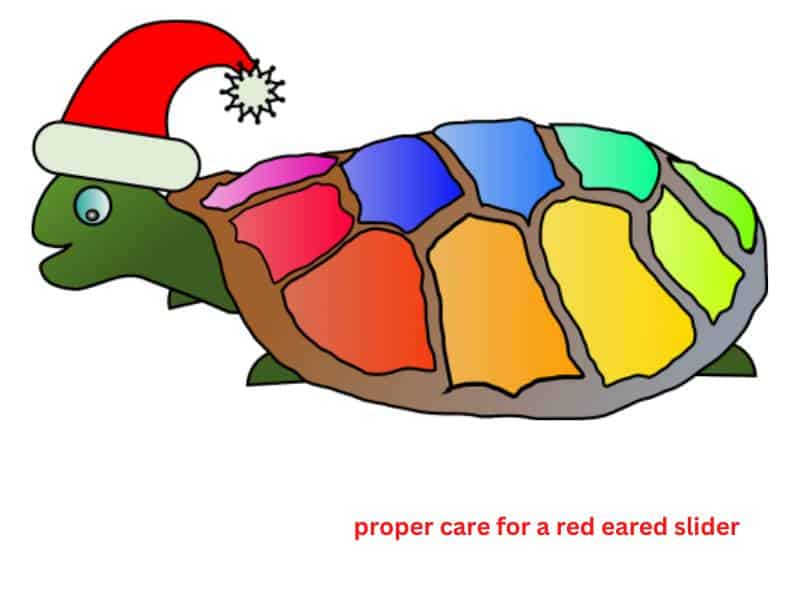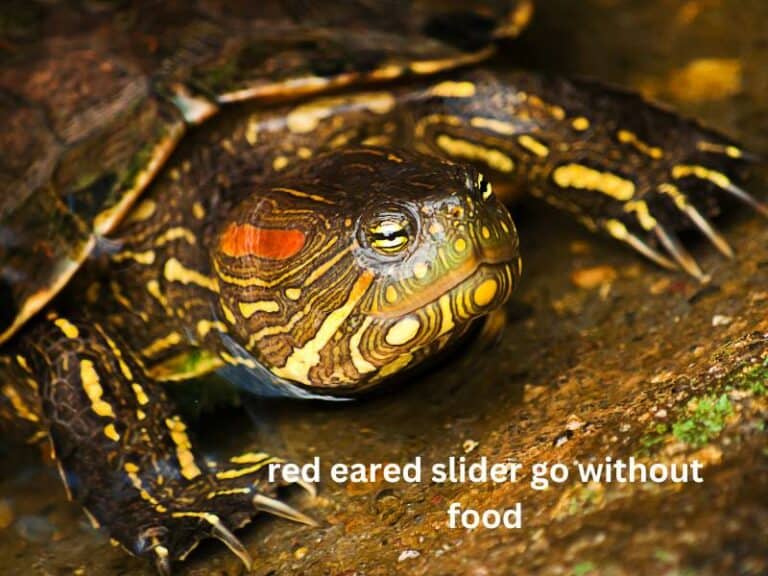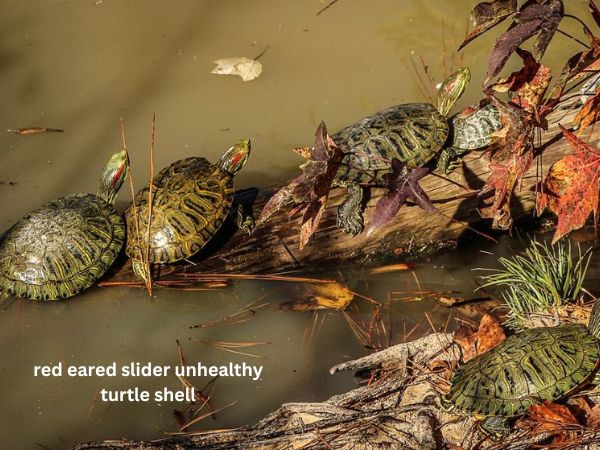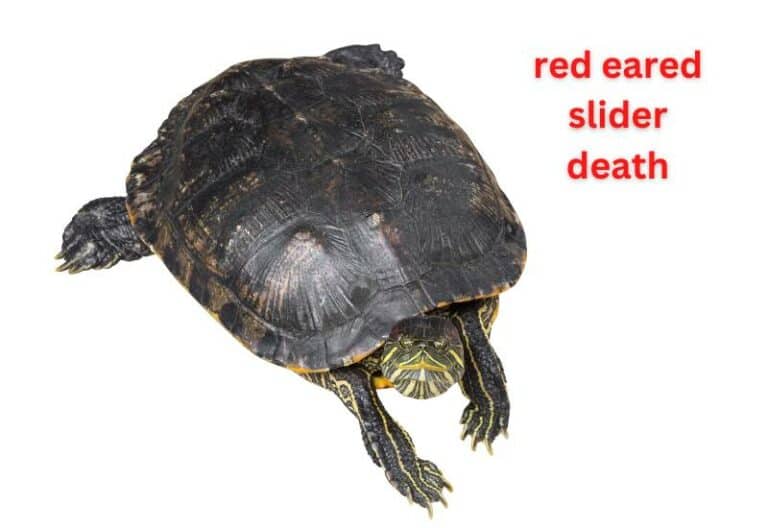red eared slider behavior: 5 Unusual Behaviors
Have you ever wondered what your red-eared slider is thinking? Here I am discussing some of red eared slider behaviors your slider may exhibit and what they may mean. Keep in mind that each individual slider may act differently.don’t take that as gospel. But these are general things to watch out for.
5 Unusual red eared slider behavior:
sometimes you may see a red eared slider with strange behavior. some of them are as follows-
1. Eating Unusual Foods :
Red eared sliders are omnivorous and will eat just about anything they can get their hands on, including fruits, vegetables, insects, worms, and even small fish or tadpoles. They may also scavenge for food in the tank or around their environment.
2. Digging :
Red eared sliders love to dig! They use their claws to dig tunnels and burrows in the substrate of their tank where they feel safe from predators and other disturbances.
3. Hibernation :
When temperatures drop low enough during colder months of the year red-eared slider turtles may enter a state of hibernation by burying themselves in mud at the bottom of ponds or slow-moving water.
4. Thirsty Swimming :
Red eared sliders are known to do a lot of swimming in search of food or places they can drink fresh water.
5. Climbing :
Red eared sliders have strong claws and will often try to climb out of their aquariums onto shelves, tables, or even window sills! It’s best to keep a lid on your tank at all times to prevent any escape attempts.
red eared slider feeding behavior:
Red-eared sliders are omnivorous and eat a wide variety of food, both plant and animal material. They feed mostly on insects, but also consume other small animals, such as fish, crayfish, tadpoles, and frogs, as well as some plant material.
They will also scavenge for food items on the bottom of the water body. While they are most active during the day, they will also feed at night if there is sufficient light. Unusual feeding behavior includes flipping over large rocks or logs to find food items hiding underneath.
red eared slider feeding behavior:
Red-eared sliders typically eat a wide variety of food items, but they do have some unusual feeding behaviors. For example, they are known to eat dead fish and other animals that they find in the water. They will also eat plant material, including leaves, flowers, and stems. Some people have even reported them eating small insects.
red eared slider fighting behavior:
Red-eared sliders are territorial animals and will often fight with each other over territory, mates, or food. The most common type of fighting behavior between red-eared sliders is pushing and shoving. However, bites and scratches can also occur, which can lead to serious injuries.
There are a few unusual types of fighting behavior that can occur between red-eared sliders. One example is shell spinning, which is when two males circle each other while balancing on their shells. Another example is plugging, which is when a male turtle plugs the female’s opening with his tail in order to prevent her from mating with another male.
5 red eared slider aggressive behavior:
There are a few things that can trigger aggressive behavior in red eared sliders:
- Territoriality – Male red eared sliders tend to be more territorial than females, and they may become aggressive when another turtle enters their territory.
- Competition for Resources – If there isn’t enough food or space available, turtles may start to compete with each other for resources, leading to aggressive behavior.
- Fear or Stress – When a turtle is frightened or stressed, it may become defensive and lash out at anything that comes near it.
- Weak Immune System – A turtle with a weak immune system may become more aggressive in order to defend itself from predators or other turtles.
- Lack of Socialization – Red eared sliders that are not adequately socialized can become stressed and aggressive when interacting with humans or other animals.
red eared slider egg-laying behavior:
Female red-eared sliders lay their eggs in a variety of places, including underwater on the bottoms of ponds and streams, on logs or rocks, and occasionally on shorelines. The females select sites that are close to the water but offer some protection from potential predators. After depositing her eggs, the female typically covers them with mud or sand.
red eared slider winter behavior:
Red-eared sliders are cold-blooded and, as a result, their behavior changes with the weather. They become less active and move more slowly in colder weather. In some cases, they may huddle together for warmth.
baby red eared slider winter behavior:
When the weather starts to get chilly, baby red-eared sliders will typically find a place indoors to hibernate. They may crawl into a hole in a tree, under a rock, or hide in a pile of leaves. Some may even make their way inside your home!
If you find one of these little guys on a cold winter day, you can help him by putting him in a warm bathtub and slowly bringing the water temperature up. Once he’s warmed up, put him back outside into his natural environment. Make sure there is plenty of water for him to swim in and someplace shady to rest during the day.
red eared slider mating behavior:
Males will search for a female and start courtship by swimming around her with jerky movements. They will then extend their neck toward the female and start “nipping” at her head and neck. If the female is interested, she will follow the male and they will mate.
Mating usually takes place in the water, with the male mounting the female from behind. After mating, the male often stays close to the female, guarding her until she lays her eggs. The pair may stay together for several weeks or even months while she lays her eggs and guards them until they hatch.
red eared slider turtle male and female behavior at Matting:
Male turtles will bob their heads up and down, swim around the female, and nip at her shell. The male is attempting to get the female’s attention and let her know he is interested. If the female is interested in the male, she will lift her head and shell out of the water and allow him to mount her.
Females will also sometimes chase after males, swim rapidly around them, and even bite them if they are not interested. If the male is not interested in the female, he will typically swim away.
How do I keep my red-eared slider happy?
Red-eared sliders are aquatic turtles that can be kept in a fish tank. Here are a few tips on how to keep your red-eared slider happy:
- Provide your turtle with a large fish tank with a filtration system. The tank should have both fresh and salt water.
- Make sure the water is clean and changed regularly.
- Provide your turtle with plenty of hiding places, such as rocks, driftwood, and plants.
- Feed your turtle a diet of fresh vegetables and fruits, as well as pellets specially made for turtles.
- Keep the temperature of the water at around 75 degrees Fahrenheit.
Frequently Asked Questions (Faqs):
Answer:
Yes, red-eared sliders do have personalities. They can be very playful and entertaining to watch. Some sliders are also very shy and will hide in their shells when they feel scared or threatened.
Answer:
The red-eared slider may keep its head low to the ground because it is trying to hide from predators. Another possibility is that the turtle is looking for food on the ground.
Answer:
Red-eared sliders are typically semi-social animals. They will often congregate together in groups, but they are also capable of living alone. They typically have a dominant hierarchy within their group, with the largest and most aggressive slider at the top. These sliders can be quite territorial and may attack other turtles or objects that invade their territory.
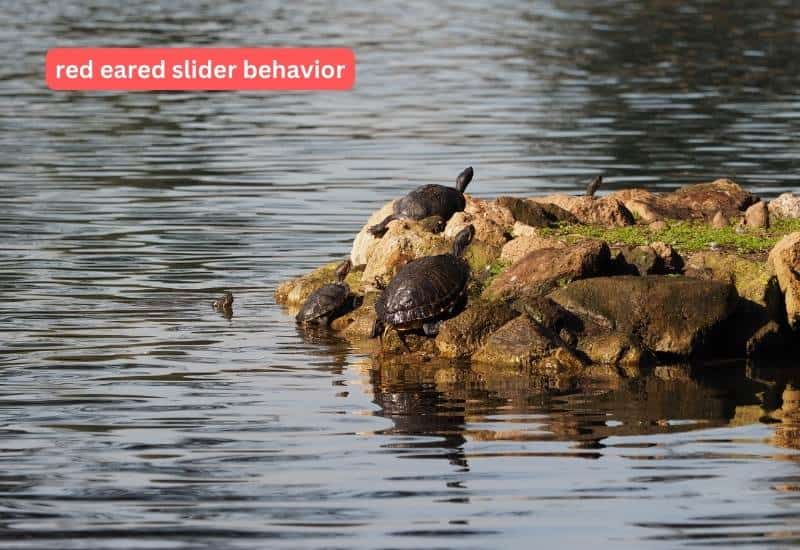
final words:
it is important to understand the red eared slider’s behavior in order to provide them with the best possible care. These turtles are popular pets, but they can also be difficult to care for if their needs are not understood. By keeping these behavioral traits in mind, owners can make sure that their pet turtles are happy and healthy. Thanks for reading!

